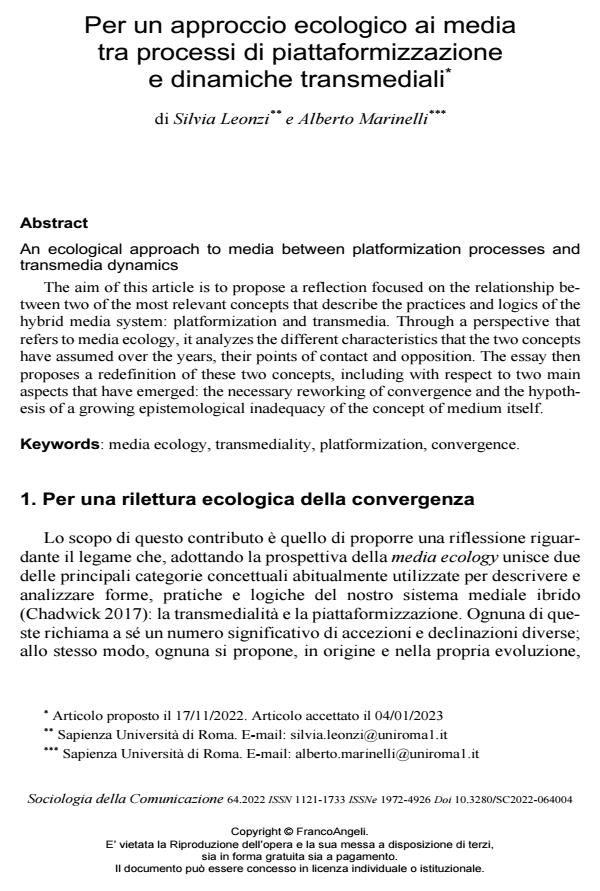Per un approccio ecologico ai media tra processi di piattaformizzazione e dinamiche transmediali
Titolo Rivista SOCIOLOGIA DELLA COMUNICAZIONE
Autori/Curatori Silvia Leonzi, Alberto Marinelli
Anno di pubblicazione 2023 Fascicolo 2022/64
Lingua Italiano Numero pagine 21 P. 59-79 Dimensione file 343 KB
DOI 10.3280/SC2022-064004
Il DOI è il codice a barre della proprietà intellettuale: per saperne di più
clicca qui
Qui sotto puoi vedere in anteprima la prima pagina di questo articolo.
Se questo articolo ti interessa, lo puoi acquistare (e scaricare in formato pdf) seguendo le facili indicazioni per acquistare il download credit. Acquista Download Credits per scaricare questo Articolo in formato PDF

FrancoAngeli è membro della Publishers International Linking Association, Inc (PILA)associazione indipendente e non profit per facilitare (attraverso i servizi tecnologici implementati da CrossRef.org) l’accesso degli studiosi ai contenuti digitali nelle pubblicazioni professionali e scientifiche
The aim of this article is to propose a reflection focused on the relationship be-tween two of the most relevant concepts that describe the practices and logics of the hybrid media system: platformization and transmedia. Through a perspective that refers to media ecology, it analyzes the different characteristics that the two concepts have assumed over the years, their points of contact and opposition. The essay then proposes a redefinition of these two concepts, including with respect to two main aspects that have emerged: the necessary reworking of convergence and the hypothesis of a growing epistemological inadequacy of the concept of medium itself.
Parole chiave:media ecology, transmediality, platformization, convergence.
Silvia Leonzi, Alberto Marinelli, Per un approccio ecologico ai media tra processi di piattaformizzazione e dinamiche transmediali in "SOCIOLOGIA DELLA COMUNICAZIONE " 64/2022, pp 59-79, DOI: 10.3280/SC2022-064004